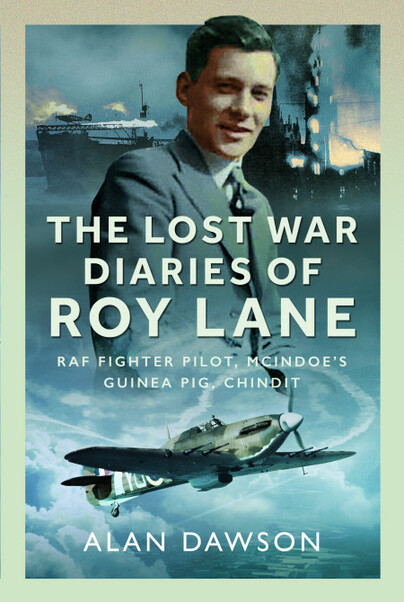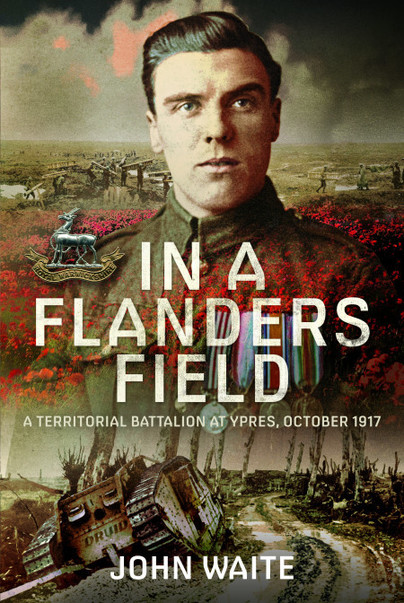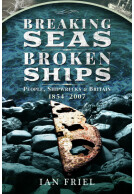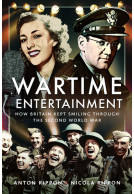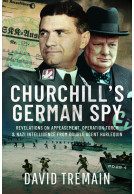The Lost War Diaries of Roy Lane (Hardback)
RAF Fighter Pilot, Mcindoe’s Guinea Pig, Chindit
Imprint: Pen & Sword History
Pages: 216
Illustrations: 23 mono illustrations
ISBN: 9781036118280
Published: 9th April 2025
(click here for international delivery rates)
Order within the next 5 hours, 27 minutes to get your order processed the next working day!
Need a currency converter? Check XE.com for live rates
This is the story of an exceptional young man whose war-time experience was long, considerable and so unusual as to be almost unique.
Roy Lane joined the RAF in 1938 as soon as he was old enough. He trained to fly Hurricanes - single-seater fighter-planes. His war-time journey took him from the Battle of Britain via McIndoe’s pioneering plastic surgery to the Merchant Ships’ Fighter Unit and the so slow-moving Atlantic and Arctic convoys. In 1942 he commanded a small RAF base at Archangel on the White Sea. Posted to India in 1943, he volunteered to become the Air Liaison Officer attached to Brigadier Bernard Fergusson’s Chindit Brigade. Its secret mission, ‘Operation Thursday’ would take it hundreds of miles on foot through the jungle-covered mountains of North-West Burma to the hoped-for turning point in the land war with Japan.
Roy, the eldest ,had two brothers Richard and Peter who also became airmen and a sister, Diana, who joined the WAAF later in the war. The family home was in Southampton, soon to be very much in the front-line of the war with Germany.
Roy’s letters from Burma urged his family to keep them to supplement the material he was gathering for ‘my book’ in his diaries. His five war diaries were last seen in the late 1960s in the bottom a wardrobe in Southampton. Searching for them uncovered much that was unknown, unexpected and sometimes extraordinary. Private letters, official correspondence, newspaper cuttings and personal recollections reveal moments of high drama - a family house destroyed by a bomb; a plane crashing in flames - good times; friends and family, some long lost.
The ‘logic of war’, the context, is explored to explain why there and why then? The interplay of fate and chance brings the story to its cruel conclusion.
What an extraordinary story - incredible to have survived all those terrifying theatres of war and overwhelmingly tragic for the family as a whole...very readable and the constant transition between personal detail and birds eye view of the overall conflict was extremely well handled.
Tim Allen
Article as featured.
Daily Mirror - Friday 28/02/25
"Lost band of brothers' tragic tale uncovered - Sister found wartime letters."
I thoroughly enjoyed 'The Lost War Diaries of Roy Lane'. It is very well written, informative and at times deeply moving. Dawson does a brilliant job to integrate the family story into the complexities of the various theatres of war between 1940 and 1945.
John Short
Inevitably it is Roy Lane’s story which is the most remarkable. To have seen action in the Battle of Britain, Battle of the Atlantic, the Arctic convoys and finally Burma as well as being one of McIndoe’s first guinea pigs was extraordinary. It would make an excellent film.
I highly recommend the book.
A wonderful, vivid story of a Hurricane fighter pilot's war.
David Sternbeg
This is a fascinating, deeply researched, story that weaves together unusual true-life stories about some of the thrilling, lesser-known deployments of Hurricane fighter pilots in the Second World War……and the impact of the war on a particular family, the Lanes.
The rich mix of source material brings to it all to life, mixing the human and family drama together with the facts of the terrible realities of war, especially battles in the air. The central thread of the story is one man’s ‘war’, that of Roy Lane, the family’s eldest, who early on becomes a Hurricane fighter pilot. Whilst many will know of the crucial deployment of Hurricane fighter planes in the Battle of Britain, the book tracks the planes later, very unusual uses in other theatres of the war; in defence of the Atlantic convoys, in a base in the Arctic and then in a scarcely believable campaign in the tropical forests of the Burmese-India border. Here Roy Lane, who had trained and then fought in the Battle of Britain, has a key role that he could never have imagined in using Hurricane planes in the unique, mysterious and original Chindit campaign taking on the Japanese invaders in Burma.
The cast of characters Roy comes across in these very different settings are fascinating. Their inventiveness, imagination and bravery results in a tremendous story. I’d recommend most highly this book.
An Interesting and informative read. Several times I found myself exclaiming out loud at the shocking detail of some events and horrors of flying in wartime and wondered at the courage of the very young men in the story. The scene is set vividly including passages from various diaries and accounts. Roy seemed unaccountably cheerful in his
HG
letters home.
Being a keen book group member I shall certainly
recommend this book to my (mixed) group of readers.
I'm not an historian or even someone who reads military history with any regularity but this book is different. The story itself - the events of the second world war and its headline conflicts - are anchored by a much more compelling story: that of a fighter pilot called Roy Lane, his two brothers and their wider family. It is as much about the domestic and filial ramifications of war as it is about dates, place names and battles. For me this was very much a 'human story' in which the political context served as an important backdrop. It has made me think more deeply about the tremendous sacrifices made by people like Roy and his brothers and also how unjustly the misfortunes of war were meted out.
Elisa Lodato
Above all this book has helped me understand how the second world war, above all others, irrevocably altered the balance of power between nations; a fine balance one might conclude. I found this book to be compelling, moving but above all, enlightening. I would highly recommend it.
A thrilling and poignant account of one family's war and the experience of the fighter pilot.
Charlie Ritchie
This is a gripping story of the fortunes of a family at war. It centres on the unique experiences of the eldest son Roy Lane, whose training as a Battle of Britain pilot takes him on a strange odyssey from the Blitz to Arctic convoys to the jungles of Burma. The sources and narrative place us firmly in his bewildering sky, sea, and landscape, while we also share first hand the whole family's experience, as a young daughter and three sons are swept up by the excitement and painful insecurity of the time.
The fragility of the pilot's life is made arrestingly clear, as is their resilience. You may be surprised to learn there was (and remains) an actual 'Guinea Pig' club for burns victims benefitting from pioneering plastic surgery work. In one of the photographs we see Roy visited in hospital by the Duke of Kent. The personal exchanges in the material remind us of how much communication itself is in a kind of transformative crisis in the period, with written messages attempting to convey the kinds of truth that families desperately need amidst the all too familiar fog of official narratives (and silences). This makes for a particularly striking and emotional final chapter, as the family archive is brilliantly orchestrated to give us an unforgettable 'present tense' experience of the painful search for truth.
The narrative style is authoritative but questioning. Roy's story is always to the fore, but we gain a real insight into the historical realities of the convoy work at Archangel, and the complexities of the extraordinary (and heroically bizarre) Chindit campaign. The characters, strategy, resourcing and conduct of this episode would make a fascinating book in its own right, and its conclusions might be quite withering. There is even a heart of darkness feel to how the vividly evoked tropical landscape (with silently descending gliders) becomes a theatre of human ingenuity, folly, and cruelty. Roy's spirit appears undaunted, touchingly. The role of this unique airman in the 'hidden logic of wartime service', is an enchanting and uplifting focus.
This book combines fascinating research with a wide ranging and unpredictable adventure story, albeit one tangible with loss. It is surprising, swiftly paced, and engaging. In exploring some of the stranger chapters in the global experience of this conflict, it is also a moving tribute to the personalities of the family at its centre. I thoroughly recommend it.
Alan Dawson is a fine historian, who has turned a labour of love -- a family history of wartime adventure and, ultimately, great loss, for which family archives only provide limited help in undoing decades of silent suffering by those who survived their sons and brothers -- into a brilliant piece of investigative story telling. At its heart are the adventures of Roy Lane, a Hurricane pilot whose determination to find excitement and serve his country took him from the skies above the British channel to the Atlantic convoys, to northern Russia and ultimately to the jungles of Burma. Roy Lane kept diaries, and promised his family that he would one day write a book about his war. But the diaries went missing, as he did, and all that the author of this volume, his niece's husband, had to go on were his letters home -- inevitably somewhat bland, to ensure that they were spared the censor's pen and reached home. But the comparative poverty of this material never gets in Dr Dawson's way.
Mark Wormald
Thanks to his deft contextualisation of his subject's experiences against the larger movements of the war, I learned a great deal not just about the campaigns to which Roy Lane contributed but also their role in the larger strategy of the allied forces.
And though, having suffered burns in the Battle of Britain, Lane rarely saw combat himself -- whether in the North Atlantic or in Russia or in Burma -- Dawson's narrative and analysis makes it clear how crucial the contribution of men like him, specialists in air liaison, in runway management, as well as in piloting Hurricanes that for one reason or another were never maintained as they should have been, were to the success of the troops in the front line. Where Lane's letters fall short in detail, Dawson has done a wonderfully inventive job of finding survivors' narratives to stand in for his lost diaries, and supply a vivid and imaginative account.
The story reaches a gripping and intensely moving conclusion as a family's hopes that two of their three sons would return home suffer a combination of devastating blows -- one sudden, the other a hideously protracted series of hopes raised and dashed. In these final pages, the father of the family, John Lane, becomes an unexpected hero of the story, complaining against bland officialdom in army correspondence and by doing so persuading his correspondents to step out of their roles and write with real sympathy for the family's agonising predicament.
This book ... is a genuinely compelling story, and a combination of military, social and family history at its finest.
About Alan Dawson
Alan Dawson read History at Cambridge and went on to a Ph.D. in early C20th Peruvian history. He is a Fellow (Emeritus) of Pembroke College, Cambridge, has taught History at various levels (6th form and university) and is the husband of Rosalind, Roy Lane’s niece.
In A Flanders Field A Territorial Battalion at Ypres, October 1917 (Hardback)
Written neither as a conventional biography or battalion history, this work centres on the remarkable life of Joe Waite, a boy soldier of the Great War. Though, in telling his story, the names and lives of 64 of his fallen comrades are also revealed. All were lost in just one month of fighting, during the hell that was the Third Battle of Ypres – also known as Passchendaele. Born in a tough, working-class neighbourhood in Coventry, in the heart of the industrial Midlands, Joe’s childhood was blighted by the loss of his mother and tempered by his father’s decision to separate him from his…
By John WaiteClick here to buy both titles for £45.00







